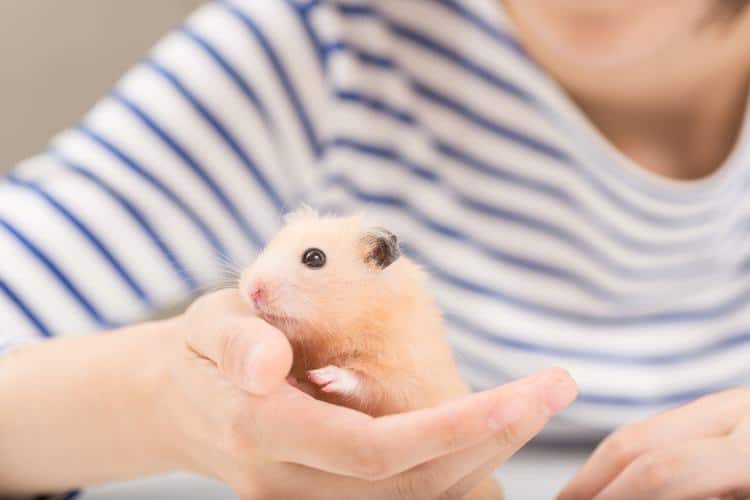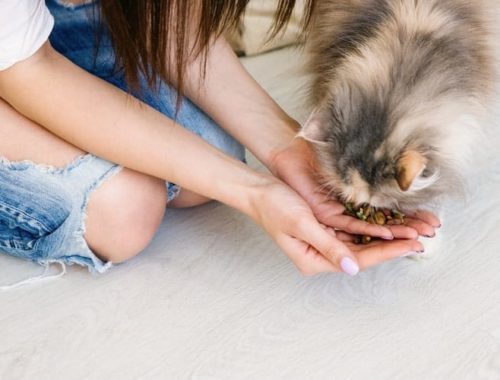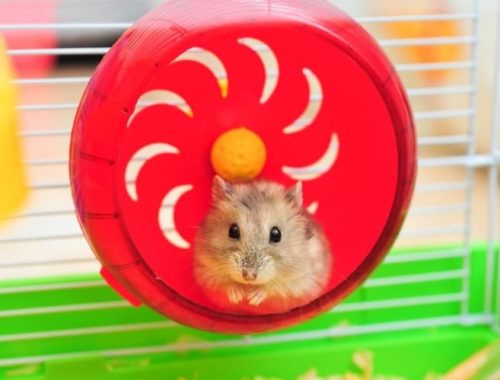Hamsters make great pets – they’re low-maintenance, cute, and don’t take up much space. Unfortunately, though, some hamsters also have a tendency to bite. If you’re thinking about bringing home a new furry friend, or if you already have a hamster that bites, there are some things you can do to prevent this behavior. These seven steps will help you play with your hamster without getting nipped.
Want to learn more about how to stop your hamster from biting? Keep reading for more detailed information on each of these steps.
Hamsters usually bite when they’re afraid, and when you first bring your hamster home, your hamster will probably be a little nervous. Give your new pet a week or so to get used to the cage, toys, and new environment. Don’t try to touch the hamster during this time. However, it’s a good idea to spend time near your hamster’s cage and talk to the little furry animal. This way, your hamster will get used to your scent and presence.
Hamsters rely on their sense of smell because their eyesight is poor. If your hamster smells something on your hands that isn’t you – such as the scent of food or another pet – it might bite you by mistake. Wash your hands before handling your hamster to ensure you won’t bring any strange smells into the cage.
Don’t try to scoop your hamster up all at once if the animal isn’t used to being touched. Instead, place your hand inside the cage and let your hamster smell you. If your hamster doesn’t want to interact with your hand at first, that’s fine – don’t force the animal to do so. Your hamster will investigate when it believes it’s ready. Put your hand in your hamster’s cage for a few minutes every day for a week or so. This will teach your hamster that interacting with you is normal, and there’s no reason to be afraid.
You may find that you make friends with your hamster more quickly if you feed the hamster tidbits that it likes. Nuts are a favorite treat of many hamsters. So are small pieces of fruit or vegetables. Feed your hamster directly out of your hand rather than just placing the treat in the cage. Just don’t overdo it – too many treats can cause health problems for hamsters.
When you pick your hamster up, don’t grab your hamster from the top. Many hamsters dislike having pressure on their backs, which makes them more likely to bite. Scoop the hamster into the palm of your bare hand instead. Avoid wearing gloves – while gloves can protect you from bites, your clean hands are less likely to alarm your hamster with unusual smells.
Don’t hold your hamster too long at first. Just let the hamster get used to the sensation of being picked up. If your hamster squirms or seems to want to be put down, return your hamster to the cage right away.
A startled hamster is a hamster that’s likely to bite. If you wake your hamster up, there’s a good chance that your hamster will be alarmed and nip you. Instead, play with your hamster on its own schedule and leave it alone when it doesn’t seem interested in interacting. Most hamsters are nocturnal, so that might mean interacting with your pet more at night.
Even gentle hamsters can bite from time to time. If your hamster bites you, it’s not because your pet wants to hurt you – it’s because it feels threatened. Avoid yelling at your hamster or shaking it, as this could hurt your hamster. Just put the hamster back in the cage and clean the bite with antibacterial soap and warm water. If you scare your hamster by raising your voice or handling the pet roughly, it’ll start to perceive you as a threat, and the hamster will be more likely to bite you again in the future.
































